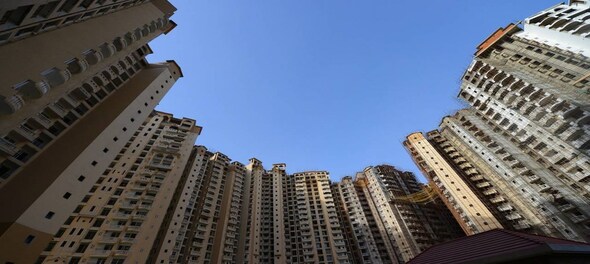
Commerce Minister Piyush Goyal may have exhorted property developers to slash prices and get rid of inventory at the earliest, data reveals that market prices are already close to the present-day ready reckoner rates.
Lower Parel & Worli’s market prices near-identical to ready reckoner
For instance, in Lower Parel the government’s average ready reckoner rate (RRR) stands at Rs 32,609 per sq ft, while the going rate in the market is Rs 34,660 per sq ft, a difference of only 6 percent, according to property consultant Anarock.
In 2015, this difference was nearly 37 percent, before authorities increased RRR to match realistic market prices.
Today, similarly negligible gaps between RRR and market prices are prevalent across major property markets. In Mumbai, Worli has an average RRR stands of Rs 35,350, while market prices are Rs 38,560 in the neighbourhood — a difference of 8 percent. Pune’s Balewadi and Dhanori neighbourhoods have an identical story to share. RRRs in both neighbourhoods are Rs 6,359 and Rs 4,666, respectively, while the market rates in these localities are Rs 6,725 and Rs 4,950 as both towns report a delta of only 6 percent between RRR and market price.
However, localities like Dadar and Tardeo in MMR are notable exceptions to the trend, with a difference as high as 58 percent between market prices and ready reckoner values. In Tardeo, the RRR stands at Rs 23,597 while the market price is a whopping Rs 56,659.
NCR sees wider gap between ready reckoner and market rates
The difference between RRR and market prices turns more significant outside MMR and Pune, especially in NCR. While the Noida Expressway has seen an average RRR of Rs 4,366, the market price here is Rs 5,075 — a difference of 16 percent. In Sector 150, that delta is as high as 37 percent, given that RRR stands at Rs 3,716 while the average market price is Rs 5,100.
In Gurgaon, RRR stands at Rs 4,133 along the Dwarka Expressway, while the market price is Rs 5,340 — a difference of 29 percent. This chasm swells up to 75 percent in localities like Golf Course Road, where although RRR stands at Rs 7,530, the going rate is Rs 13,150.
The southern metropolis of Bengaluru has seen smaller gaps between RRR and market prices in certain localities like Indiranagar, where RRR or guidance value (as the measure is termed in the South) stands at Rs 10,312 while market prices are at Rs 11,500 — a difference of 12 percent.
No commitment on cutting ready reckoner rates
Section 43C (A) of the IT Act prohibits developers from selling inventory below the ready reckoner rate. Hence, developers are reliant on the government to slash RRR first, in order to slash market prices themselves, and then bring about correction in prices.
However, the government has not promised the developers any downward movement in the ready reckoner or circle rate yet. “We are trying for there to be a concession in the ready reckoner, but even if it’s not there, you will have to sell,” said Goyal, in the same webinar where he tries convincing developers to cut prices, which went viral.
Real estate developers have been lobbying for a cut in RRR for a while, to bring back real estate demand.
However, if there's one indication to go by, it's that RRR has only seen an upward trajectory since 2015.
Ready reckoner rates on upward trend since 2015
The difference between RRR and market prices in Dadar and Tardeo were as high as 95 percent and 100 percent, respectively, in 2015. Dwarka Expressway and Golf Course Road saw the chasm between RRR and market prices at 66 percent and 104 percent, respectively, in 2016.
Subsequently, authorities have only hiked the RRR and brought them in line with realistic market prices so as to enable the government to gain more out of stamp duties. Hence, the government’s reluctance to cut the RRR is a tad understandable. However, unless and until a cut is brought about, property prices will have no further scope of correcting, and a revival in real estate demand may continue to be a distant dream.
First Published: Jun 15, 2020 4:22 PM IST
Check out our in-depth Market Coverage, Business News & get real-time Stock Market Updates on CNBC-TV18. Also, Watch our channels CNBC-TV18, CNBC Awaaz and CNBC Bajar Live on-the-go!


Punjab Lok Sabha elections: Check full list of AAP candidates and constituencies
May 18, 2024 12:59 PM
PM Modi, Rahul Gandhi election rallies in Delhi today: Here are the routes to avoid
May 18, 2024 11:28 AM

